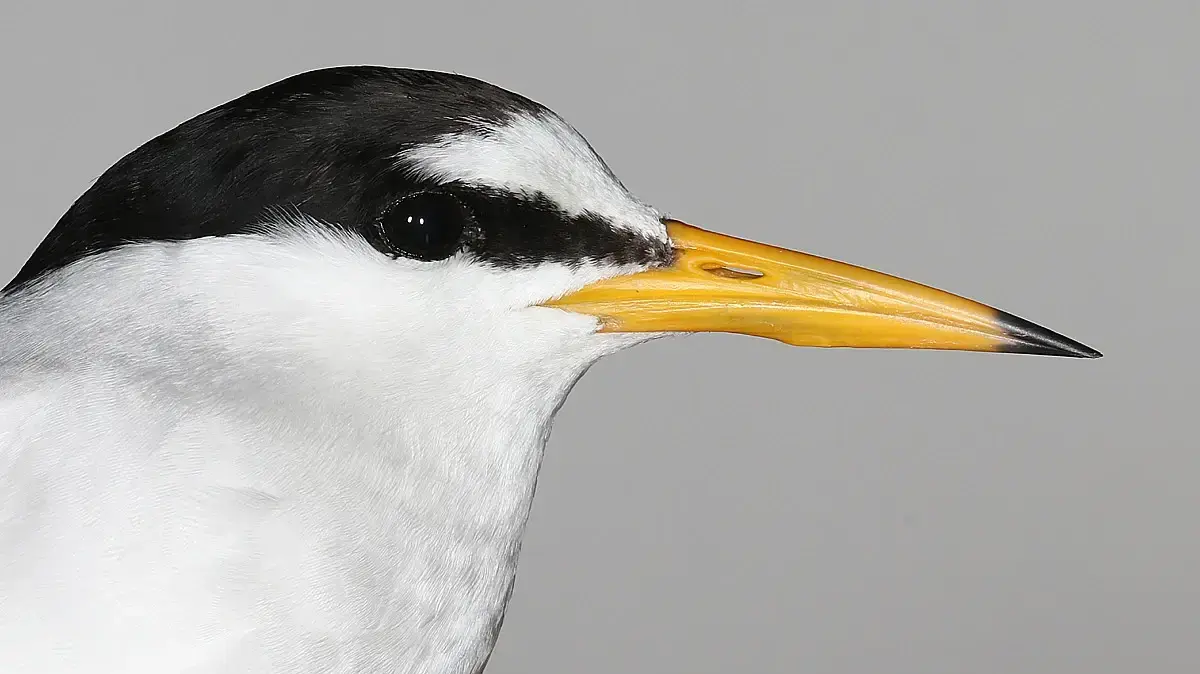The "Israeli" pygmy seagull recorded on the shores of Abu Dhabi / Society for the Protection of Nature, Ted Burkett
An aerial pygmy gull arrived in Abu Dhabi by flight, and is the first bird from Israel to be recorded in the United Arab Emirates.
This week, the Israeli Drowning Center of the Society for the Protection of Nature received a report of a pygmy gull that was recorded last week in Abu Dhabi (United Arab Emirates), with an identification ring on its leg belonging to the research project taking place in the Atlit salt ponds.
In the Israeli Tibbing Center, it is noted that this is about 2,100 km from Israel and this is the first pygmy gull ever to be tagged in Israel (as part of a research activity) and recorded in the Persian Gulf. Checking the information associated with the ring on its leg, in the database of the Israeli Tibbing Center, shows that the It was marked at Atlit in the summer of 2022 and since then it has not been recorded at Atlit again.
In Israel, seagulls nest mainly in the salt ponds in Atlit.
The Seagull and the Ring in Abu Dhabi/The Nature Conservancy, Ted Burkett
In Israel there are only about 200 nesting pairs
The pygmy gull is a water fowl that nests in Europe, Asia and North Africa.
In Israel there is a small nesting population, which is in danger of extinction and numbers only about 200 nesting pairs.
As part of the seagull conservation and research project in Israel, carried out by the Ornithology Center of the Society for the Protection of Nature in cooperation with the Nature and Parks Authority and the "Salt of the Earth" company, in whose territory the seagulls nest, the seagulls are marked with identification rings.
Marking birds with metal rings for tracking and research purposes began about 130 years ago in Denmark, and since then has become a common research tool around the world.
A serial number and an address are engraved on the metal rings, which allow personal identification of the bird being studied.
In addition to the metal ring, each seagull is marked with another ring that allows identification in the field, using optical means, such as a telescope, or a long focal length camera.
"In Israel, seagulls nest mainly in the salt ponds at Atlit, which is why the 'Salt of the Haaretz' company is an important partner in seagull conservation efforts," says Dr. Yosef Khayat, Director of the Seagull Center at the Society for the Protection of Nature. "Along with the dwarf gulls, another species of seagull nests in the salt ponds at Atlit - the sea
The sea gulls are a large and aggressive species, compared to the dwarf gulls.
The results of the research, which is carried out in Atlit and uses marking rings, taught us a lot about the migration routes of seagulls.
On the other hand, the migration routes and breeding sites where the little gulls stay outside the nesting season remain unknown.
Apart from a pair of pygmy gulls, which were marked in Atlit and identified a few years ago in Mozambique, nothing is known about the migration routes of the pygmy gulls after they leave Israel, at the end of the nesting season."
Recently, the pygmy gull that nests in Israel and the Middle East was defined as belonging to a unique subspecies, distinct from the nesting in Europe. One of the characteristics that supported the new definition is the different migration route of the little-nosed gulls that nest in the Middle East. Little-nosed gulls from Western and even Eastern Europe migrate to West Africa and winter on the shores of the Atlantic Ocean, while the little-nosed gulls that nest in Israel migrate and winter in the Indian Ocean, to the shores of East Africa, or Southwest Asia The exciting find of the dwarf gull in the United Arab Emirates strengthens our knowledge regarding the unique migration route of nesting dwarf gulls in Israel.
More in Walla!
A black sparrow was chosen as Israel's bird of the year for 2023
To the full article
Belongs to a unique subspecies, which differs from the European nesting subspecies.
Dwarf Gull/The Society for the Protection of Nature, Dr. Yosef Chiat
Dr. Yoav Perlman, Director of the Ornithology Center at the Society for the Protection of Nature, said: "The main factors that threaten the future of the pygmy gull population in Israel are the reduction and damage to moist and coastal habitats, invasive species, such as mongooses, foxes and cats, which endanger the gull chicks, and the outbreak of Diseases and viruses (for example, bird flu).
Migratory species may be exposed to additional risk factors along their migration route, therefore it is of additional importance to identify the migration routes and the hotspots of these species."
More on the same topic:
Animals
birds
United Arab Emirates

